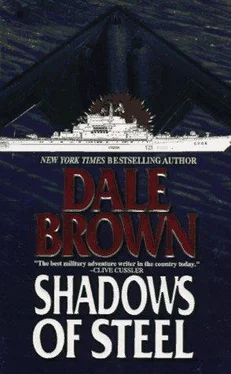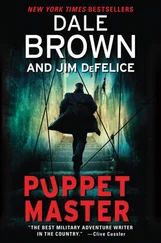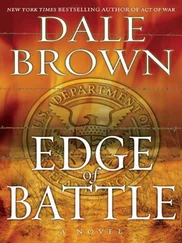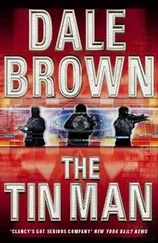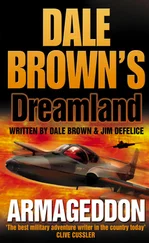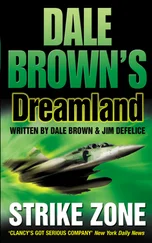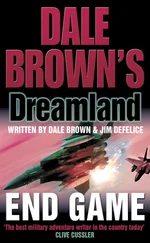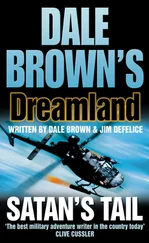Thirty seconds later, the last four JSOW missiles were on their way to the aircraft carrier Khomeini.
Following McLanahan’s programmed flight plan, the four “Elmer’s” missiles arced north of the Iranian battle group, then turned south-southeast, roughly following each other in trail 1,500 feet apart. They were just a few dozen feet above the tallest antenna on the destroyer Zhanjiang by the time they passed over the fleet.
As they passed overhead, tiny bomb bays opened up on each missile and an invisible liquid vapor cloud sprayed over the Iranian warships. The heavy vapor droplets settled quickly in a straight sausage-shaped pattern, coating the ships with a thin, odorless, tasteless film. As the missiles completed their silent deliveries right on target, they splashed harmlessly into the Gulf of Oman, completely undetected and unrecoverable.
In seconds, exposed to air, the thin clear film that had been deposited over the two big warships began to change toward THE AIRCRAFT CARRIER KHOMEINI “it is about cursed time!” Admiral Tufayli shouted. The first rescue helicopter was just lifting off the deck and taking position on the port-side, ready to rescue any crewmen who might have to eject shortly after takeoff. It had taken more than five minutes to scramble a crew and get a helicopter airborne, and that was totally unacceptable.
The admiral turned from the helicopter deck forward to the short holdback point near the center of the carrier in front of the island superstructure, where a Sukhoi-33 fighter sat loaded with two R-73 long-range air-to-air missiles—the deck crews had managed to off-load the fighter’s four Kh25 laser-guided attack missiles, but did not have the time to replace the empty stations with more air-to-air missiles. With only a 400-kilogram payload and a partial fuel load, that Su33 could use the shorter 100-meter takeoff run, while the heavier fighters had to use the 200-meter run along the port-side of the ship. Tufayli was impatient, but he knew that night carrier operations were the most dangerous and the crews were working at their best speed. “Any radar indications on that bomber?” he asked.
“Possible unidentified target bearing zero-five-zero, range twelve miles, flying away from us,” came the reply.
“That has got to be the bomber, Badi,” Tufayli said. “I want it checked out immediately! And dispatch a radar helicopter to track that aircraft. If our fighters shoot it down, I want searchers to recover any bodies and as much wreckage as-“
“Sir, we have an emergency, the pilot of our rescue helicopter reports a hot hydraulic pack and wants a ready deck for an immediate precautionary landing,” General Badi announced suddenly.
“Denied!” Tufayli shouted. “I want two fighters airborne before any other deck operations!”
“Sir, the Mil-8 helicopters have only a single hydraulic pack and an emergency system,” Badi reminded the Pasdaran commander. “The emergency system is useful only in performing a controlled descent, not for maneuvering. Sir, no hostiles are engaging us—it is not critical to have fighter coverage airborne right away. We should bring that helicopter aboard.
“All right, Badi, but after the first fighter launches,” Tufayli said. Relieved, Badi passed along the order.
As a second fighter was placed into the holdback position on the 600-foot launch run, the first fighter on the number two 300-foot launch track activated its afterburners, and after a few seconds to allow the thrust to stabilize, it was released and it headed for the ski jump. Acceleration looked normal, although any fighter launch off the short 100-meter run was always very tense.
The fighter hit the incline bow “ski jump,” sailed gracefully into the night sky, disappeared as it fell beneath the ski jump, then could be seen straight off the nose, its afterburners still on full power. “Finally!” Tufayli shouted. “Recover that helicopter, then get that second fighter airborne as soon as …”
“Sir, Interceptor One is reporting a flight-control malfunction!”
Badi shouted. Tufayli turned his attention back to the fighter that had just taken off..It was still in max afterburner, climbing at a very steep angle. “The pilot is having great difficulty moving any flight controls, and the landing gear is stuck in an intermediate position.”
“What in hell is it, Badi?” Tufayli shouted. The fighter disappeared in the night sky, its afterburners still on full. At that rate of fuel consumption, Tufayli thought, it might have time for one long-range missile shot at one of the intruders before it had to return.
“it could be contamination in the hydraulic fluid,” Badi speculated. “This is a similar malfunction as the patrol helicopter. I …” He paused as he listened to the intercom report in his headset, then turned, ashen-faced, to Tufayli.
“Sir, flight ops reports the pilot of Interceptor One was unable to maintain control of the fighter and was forced to attempt to eject.”
“Eject?” Tufayli shouted. He leapt to his feet and scanned the horizon for the plane, but saw nothing. “What happened?”
“His last report stated that his ejection system had malfunctioned,” Badi reported. “The fighter has been lost on radar.
Tufayli was momentarily in shock, but his only thought was of the unidentified fighters out there. “Get Interceptor Two airborne!”
he screamed. “Get it up there now!”
“Sir, there is something happening on the flight deck,” Badi said.
“I do not know if it is fuel or hydraulic fluid contamination or corrosion or some kind of maintenance error, but it may have affected the entire air wing. We should postpone all aircraft launches until the problem has been-“
“No!” Tufayli shouted. “I want air cover up immediately! We are unprotected without it! Range to the bomber?”
“Sir, the only possible target is now thirty kilometers from the carrier and increasing—it is not a threat to the group,” Badi said. He touched his headset, listening carefully to the intercom reports. “Sir, combat section is reporting a possible malfunction of the radar arrays.”
“What in hell is going on here?” Tufayli shouted. “Is everything breaking all at once? What sort of malfunction?”
“Problem with the antenna itself, possibly a bad bearing or problems in the gear mechanism—the radar array is not rotating properly,” Badi replied. “We still have adequate radar coverage and antiaircraft capability Sir, Interceptor Two is ready for takeoff. I request permission to delay takeoff until a fast examination of the aircraft hydraulic system can be accomplished.
It will only-“
“No, launch Interceptor Two immediately!” Tufayli shouted. Badi had no choice but to give the order.
The takeoff appeared normal—for only a few seconds, right at the beginning of the takeoff run. The afterburners flared, the fighter paused, the holdback bar released, the fighter leapt toward the ski jump—then seemed to actually slow down! Tufayli thought it was an optical illusion, but as the fighter neared the beginning of the jump, it seemed as if the pilot were braking to a halt—it was slowing down! “Badi, what in God’s name …?”
Just as Badi was keying his mike button, ordering flight ops to order the pilot to abort the takeoff, the long twin afterburner plumes wobbled unsteadily from side to side, then suddenly pitched upward as the nose gear collapsed. Still in full afterburner power, the force of the engines snapped the Su-33 fighter in half, the fuel tanks burst open, and the fighter exploded in a huge fireball that instantly engulfed the entire flight deck. The men on the admiral’s bridge dropped to the deck as the observation windows imploded, and a wall of searing heat followed the ear-shattering thunder of the explosion. Several secondary explosions rumbled around them as other fighters and helicopters up on deck caught fire and exploded.
Читать дальше
